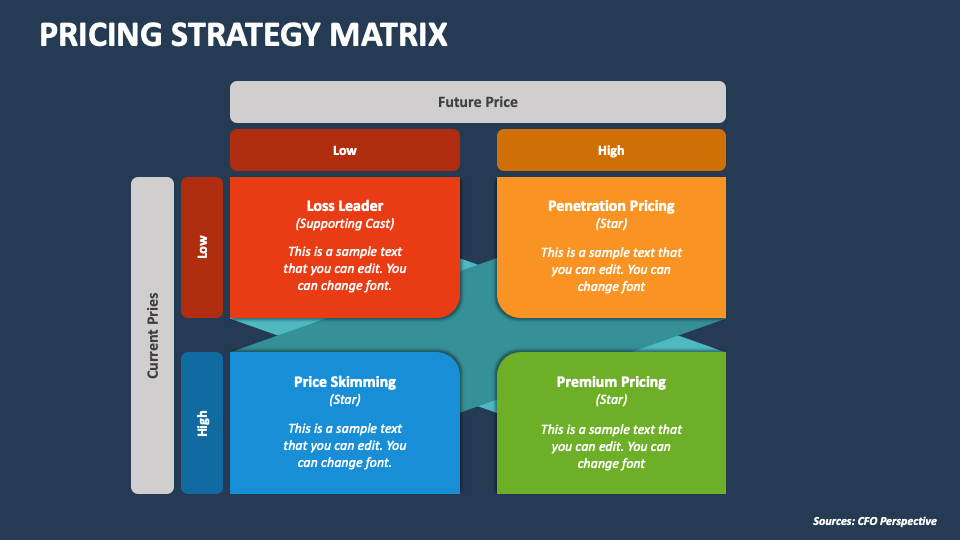Exactly how to Examine and Maximize Your Pricing Strategy for Better Outcomes
Exactly how to Examine and Maximize Your Pricing Strategy for Better Outcomes
Blog Article
Optimize Income With Proven Rates Approach Methods
Methods such as value-based rates, dynamic rates, and thorough market analysis can substantially enhance a firm's monetary performance. Comprehending customer perception and leveraging data analytics for agile pricing modifications are vital parts of this strategy.
Understanding Client Understanding
Understanding customer assumption is essential for developing efficient rates techniques. It influences how consumers review an item's worth, top quality, and general appearance. Companies need to identify that clients often base their readiness to pay not entirely on the item's innate characteristics however also on psychological factors, including brand online reputation, social status, and regarded deficiency.

In addition, firms need to take into consideration the role of prices psychology, such as charm prices or rate anchoring, which can substantially impact consumer actions. Comprehending these perceptions enables companies to frame their rates techniques in a way that straightens with consumer expectations while making the most of productivity.
Integrating client assumption into rates methods not only aids in establishing affordable costs yet likewise fosters brand commitment, as customers feel comprehended and valued. Eventually, a nuanced understanding of client assumption can lead to lasting earnings growth and enhanced market positioning.
Analyzing Market Trends
To create a reliable rates method, examining market fads is essential for services looking to stay competitive. Understanding the dynamics of market changes enables business to make informed choices relating to prices modifications, item launches, and resource appropriation - Pricing Strategy. By keeping an eye on customer actions, financial signs, and industry developments, organizations can recognize patterns that notify their prices structures
Trick components to think about when evaluating market trends include demand elasticity, seasonal fluctuations, and arising technologies. Demand flexibility aids services determine just how cost changes might impact consumer investing in decisions. Seasonal trends can offer insights into optimum rates throughout peak and off-peak durations, enabling tactical discounting or promotional prices. Furthermore, keeping an eye on technological developments can help determine possible dangers or opportunities that might affect pricing strategies.
Utilizing information analytics tools can boost the precision of trend evaluation, providing important understandings that facilitate nimble decision-making. Companies need to likewise think about performing normal marketing research to confirm assumptions and adapt to progressing consumer choices. By leveraging these understandings, organizations can not just enhance their pricing methods yet likewise strengthen their overall market placement, making certain long-lasting earnings and development.
Competitive Prices Approaches
An affordable rates technique is crucial for businesses aiming to gain an edge in a congested marketplace. By evaluating competitors' prices frameworks and market positioning, business can purposefully establish their rates to draw in clients while keeping profitability. This technique requires a complete understanding of both the competitive landscape and consumer understandings of value.
One reliable approach is cost matching, where a service supplies to match or defeat a rival's cost. This technique can improve client commitment and urge sales, particularly in price-sensitive markets. In addition, infiltration rates can be employed to capture market share by originally setting costs lower than rivals, luring customers to attempt the product and cultivating brand name recognition.
Additionally, organizations can execute psychological rates methods, such as pricing products just listed below Discover More a rounded number (e.g., $9.99 instead of $10 - Pricing Strategy.00) This can develop the assumption of a better offer, affecting consumer behavior
Eventually, a successful competitive rates method balances the need to remain eye-catching to clients while guaranteeing that the pricing version aligns with the company's general goals. Regularly examining and readjusting pricing in reaction to market shifts and rival activities is vital for continual success.
Value-Based Prices Methods
Value-based pricing methods concentrate on establishing costs mainly based upon the perceived value of a product or service to the customer, instead of solely on manufacturing costs or competitor costs. This strategy requires a deep understanding of client needs, preferences, and the special benefits that the product and services deals. By identifying the specific value vehicle drivers that reverberate with consumers, businesses can produce pricing techniques that reflect the true worth of their offerings.
To carry out value-based pricing effectively, companies need to involve in detailed market research, consisting of consumer studies and focus groups, to gather insights into consumer perceptions. In addition, services must section their customer base to customize rates approaches that align with different worth understandings throughout sections.
Interaction plays a crucial duty in value-based pricing; business need to express the unique value recommendation plainly to validate the price factor. Moreover, ongoing evaluation and modification are crucial, as client understandings of value might change gradually because of market dynamics or affordable activities. By focusing visit here on worth in prices strategies, organizations can enhance client satisfaction, improve commitment, and ultimately optimize earnings.
Dynamic Prices Models

Dynamic prices leverages sophisticated formulas and information analytics to keep an eye on rival prices, client actions, and inventory degrees. By dynamically readjusting prices, services can enhance profits, take full advantage of profit margins, and react promptly to changes in the industry. For circumstances, airline companies frequently use this model to change ticket prices based upon aspects like staying seats, time until separation, and competitor pricing.
Nonetheless, the implementation of dynamic prices have to be come close to with caution. Transparent interaction with customers is important to keep count on and prevent assumptions of unreasonable pricing practices. In addition, businesses must make sure that their rates algorithms are not extremely complicated or nontransparent, as this can cause consumer discontentment.
Inevitably, when implemented attentively, dynamic prices versions can offer services with a significant affordable advantage, allowing them to profit from market opportunities while dealing with customer assumptions in a quickly altering economic landscape.
Verdict

Strategies such as value-based pricing, dynamic rates, and comprehensive market evaluation can substantially improve a firm's financial efficiency. Seasonal patterns can give insights right into optimum pricing during height and off-peak periods, enabling for calculated discounting or advertising prices.Dynamic pricing leverages sophisticated algorithms and information analytics to keep an eye on rival prices, consumer behavior, and inventory degrees. By recognizing consumer understanding, assessing market trends, and applying competitive prices methods, companies can successfully straighten their rates with customer expectations. In addition, value-based pricing and dynamic prices designs enable my link organizations to respond agilely to market variations.
Report this page